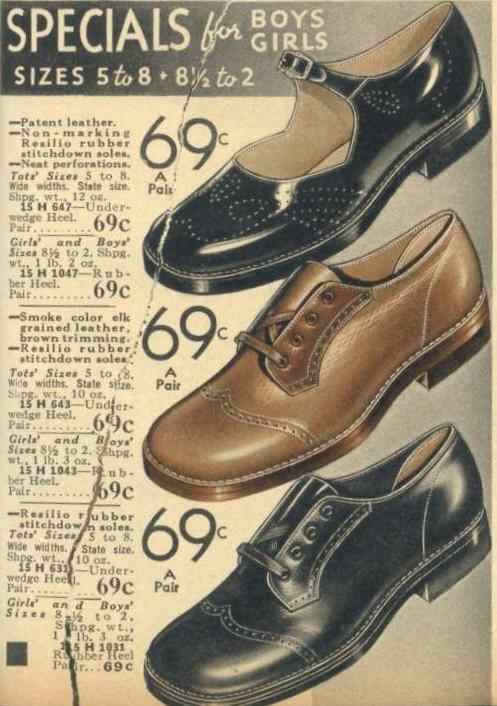
Figure 1.--Here we see specials offered by Sears, styles suitable for both boys and girls. We see both strap shoes and oxford wing tips. The shoes were shown for younger children in the 1935 Spring-Summer catalog. |

|
In the specials box of a Sears shoe page was a black patent leather strap shoe for boys and girls. The attached page showing children's shoes from 1935 is interesting in that this is the only ad I seen for strap shoes that actually states they are for boys and girls in sizes 8 1/2 to 2. This would be consistent with the clothing ads showing boys wearing these shoes which we have discussed on several HBC pages.
In the specials box of a Sears 1935 catalog shoe page was a black patent leather strap shoe for boys and girls (figure 1). The attached page showing children's shoes from 1935 is interesting in that this is the only ad I seen for strap shoes that actually states they are for boys and girls in sizes 8 1/2 to 2. This would be consistent with the clothing ads showing boys wearing these shoes which we have discussed on several HBC pages. The ad copy for the strap shoe under "Specials for Boys and Girls, sizes 5 to 8 & 8 1/2 to 2 reads: "Patent leather, Non -marking Resilio rubber stitchdown soles-- Neat perforations. Tots' Sizes 5 to 8, wide widths. State size, Shipping Wt. 12 oz.
13H1047--Underwedge Heel. Pair ... 69c. Girls' and Boys' Sizes 8 1/2 to 2. Shpg wt. 1 lb. 2 oz. 15H1047--Rubber Heel. Pair ... 69c."
The Sears page had other ingle strap shoes in both white and black. The ad copy of these other shoes did not address the gender appropriateness, except one described the shoe as appropriaste for "little tots".
We can speculate on why boys are listed in the ad. The shoes were listed as a "Special" -- maybe an oversupply of these shoes, and opening the market to boys would help reduce inventory. Maybe the style was still very popular for boys in Europe and they would try selling to boys in the United States as a "trial baloon", etc. I've seen pictures of older boys wearing them in Germany at HBC. 1935 is not that far back. It would be nice if some of your readers could shed some light on this topic. It is curious that this style was mentioned as appropriate for boys. We believe that with few exceptions boys would have worn this style only for very formal occassions such as weddings. They were not unknowm, but they certainly were not very common. Boys certainly wouldn't wear them to school.
A reader writes, "I would agree but with the caveat that people dressed much more formally for attending church back then than they do now. I don't know, but I suspect that some boys might have worn something like this for "sunday best" in the 1930s." (Spoken as one who feels that little boys attending Sunday school in T-shirts, jeans shorts, and sports sandals is going too far the other way)." I think that some boys probably did wear them for formal dress up events. I suspect that unless they were very young, they weren't to happy about it. I also suspect that it would have been mostly boys from affluent fmilies, but I am not entirely sure about the social-class connotations. This was certainly more common in the 1910s and to a lesser extent the 1920s, but by 1935 it wa becoming much less common.
A HBC reader comments, "I don't buy the argument that it was easier to draw strap shoes. Note the detail of perfs as a "wing tip" which might have appealed to boys. Judging by the photographic record, strap shoes were very popular in Europe at this time for boys, and this might have been an effort by Sears to revive their popularity in the United Sttesd, as they were in the 1920s, and before. This is the last time (1935) I have noted them being advertised for boys in Sears catalogs. While I have seen boys wearing them in wedding pictures in the 1930s, they were less and less popular during the decade.
I wonder if durability had anything to do with wearing strap shoes for every day use. It was during the Depression, and oxfords might have been more suitable for everyday wear, with patent leather strap shoes only used for more formal occasion. What do you think?" Our general assessment is that gradually children had more and more to say about their clothes. That presumably is whu knickers began to decline in the late 1930s. Boys just dodn't like them. As far as strap shoes go, I think American boys began to see them as not only a little boy style, but a girls' style and thus did not want to wear them. I think this was particularly true for working-class families. Boys from addluent families were somewhat more likely to wear them. Just why this development occurred in America and not Europe until much laster, I am not sure.
Navigate the Boys' Historical Clothing catalog/magazine pages:
[Return to the Main American 1935 catalog shoe page]
[Return to the Main American mail order 1935 page]
[Main photo/publishing page]
[Store catalogs]
[Fashion magazines]
Navigate the Boys' Historical Clothing Web Site:
[Introduction]
[Activities]
[Biographies]
[Chronology]
[Clothing styles]
[Countries]
[Bibliographies]
[Contributions]
[FAQs]
[Glossary]
[Satellite sites]
[Tools]
[Boys' Clothing Home]
Navigate the Boys' Historical Clothing Web Site:
[Sailor hats]
[Flat caps]
[Sailor suits]
[Buster Brown suits]
[Eton suits]
[Rompers]
[Tunics]
[Smocks]
[Pinafores]
[Knickers]
[Long stockings]
[Kneesocks]
[Underwear]
